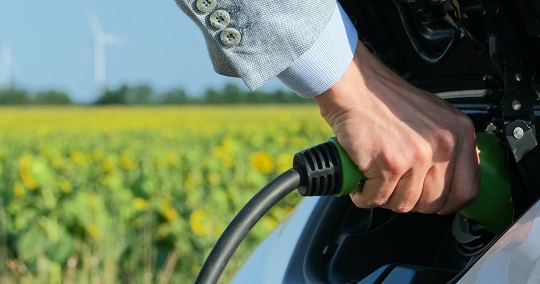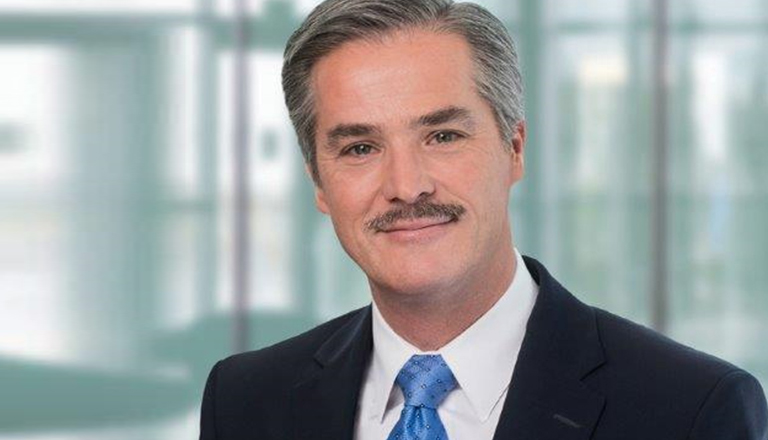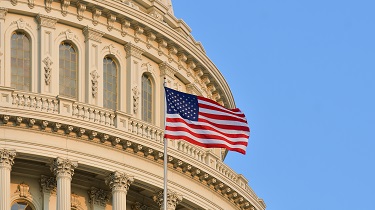As both nations focus on their post-pandemic recovery, opportunity in the United States for Canadian exporters “has never been better,” according to Bruce Heyman, a former U.S. ambassador to Canada.
“The U.S. has no better friend, no stronger relationship, no more important ally or trading partner than we do with Canada and the opportunity set in front of us is quite large,” says Heyman, who was a panelist on Export Development Canada’s (EDC) recent webinar, 100 days of Joe Biden: The new outlook for Canadian business, which delved into how the new administration’s policies will shape our country’s exports south of the border.

“I personally believe the opportunity in front of (Canadians) if you’re thinking of doing business in the U.S. has never been better—since maybe post-World War II,” he says, pointing to the surge in green technologies, water and energy infrastructure and electric vehicles. “We’re the largest purchaser of your exports and given we are the largest provider of tourism and consumer spending—this is going to be good news for Canada for the next several years.”
Strong bilateral trade
The U.S. ambassador to Canada under the Obama administration from 2014 to 2017, Heyman is brimming with optimism about strengthening Canada-U.S. trade ties, especially now, as both countries rally back from the economic damage caused by COVID-19.
Described as “one of the most important bilateral relationships in the world,” the Canada-U.S. trade partnership has solid, deep roots. In July 2020, those bonds were strengthened even further when the Canada-United States-Mexico Agreement (CUSMA) came into effect, eliminating tariffs and other trade barriers between the three countries.
Gregory Trippenbach, EDC’s regional vice-president for the U.S., says our close ties with the United States have significant benefits for Canadian exporters. In his column published in May, he wrote: “Our economies are intricately linked, trading an average of $1.4 million in bilateral goods and services every minute of every day. The U.S. plays a vital role in our overall export performance, with exports to the U.S. worth US$286 billion in 2020. When going abroad, more than 70% of Canadian companies export first to the U.S.”
You should also check out
Discover insights and advice on the key economic indicators impacting Canadian companies in 2021.
In February, U.S. President Joe Biden and Prime Minister Justin Trudeau held their first bilateral trade meeting to discuss our renewed partnership and how to work together on key issues, including cleantech, climate change and sustained economic growth through stronger supply chains.
“President Joe Biden has made it clear for much of his career: He is an environmentalist and he is leaning very heavily on environmental policies,” says Heyman to explain Biden’s decision to shut down the Keystone XL pipeline in his early days as president. “You’re going to see this continue to get overlaid on the budget, on our national security and on our infrastructure spending.”
To boost his country’s domestic economy, another top priority for the new president is weaning Americans off his US$1.9-trillion stimulus package and back into the workforce. And that road to recovery is paved with gold, according to many forecasters, who estimate the U.S. economy will grow by more than 6% this year.
Although welcoming news, Heyman admits that keeping up with the supply demand won’t be easy for American companies. But the potential benefits for Canadian exporters are huge, he says.

“The U.S. is a net importing nation: We actually buy more than we sell, which gives a great opportunity for those who provide goods and services to the United States. We have shortages now as we’re ramping up from this significant economic downturn as a result of COVID-19, and we’re finding shortages throughout our supply chains. That’s a great place for Canada to come in and to help fill in some of the gaps that we have. That’s an important part of our supply chain relationship.”
Supporting the growth of small- and medium-size businesses is also paramount to our economic recovery and Heyman says there are plenty of opportunities to go around.
“For small businesses—this is a great entrepreneurial moment. This is a great moment for you to think about, ‘How do I expand my business to my neighbour, who is actually going to do well economically in the very near foreseeable future.’ Also, a lot of consumers have a lot of cash in their bank accounts that they didn’t spend during COVID-19, but will want to spend it now.”
If Canadian companies want to expand into the U.S. market, Heyman insists they need to think outside the box, look to the future and act fast.
“To use an old hockey saying: You want to skate to where the puck is going—not to where it currently is,” says the affable diplomat, who co-authored the New York Times bestseller, The Act of Diplomacy: Strengthening the Canada-U.S. Relationship in Times of Uncertainty, with this wife, Vicki.
“And where it’s going is innovation and creativity and entrepreneurship. It’s taking risks and looking at new and different ways of creating products and services that are more efficient, that fit the consumer needs—and consumer needs are changing. And they’re changing fast.”

Success through forward thinking
But forget status quo, warns the Chicago-based businessman.
“We’re not going back to just the way it was and leaving it where it is. You need to evolve your business and not get stuck in: ‘This is the way we’ve always done it, so we’re going to just continue to do it that way.’”
Whether it’s agri-tech, climate change projects, or the innovative auto industry, Heyman says opportunities are ripe for the picking.
“We are changing our energy infrastructure. Wind, solar, and other renewable sources of energy will continue to need to be developed, as well as vehicles and utilization from moving from fossil fuels to electric vehicles. It’s happening at a faster pace.
“What Canadian businessmen and women should be thinking about is your opportunity to go into this wildly expanding, growing U.S. economy and ship goods. There’s no better time.”




